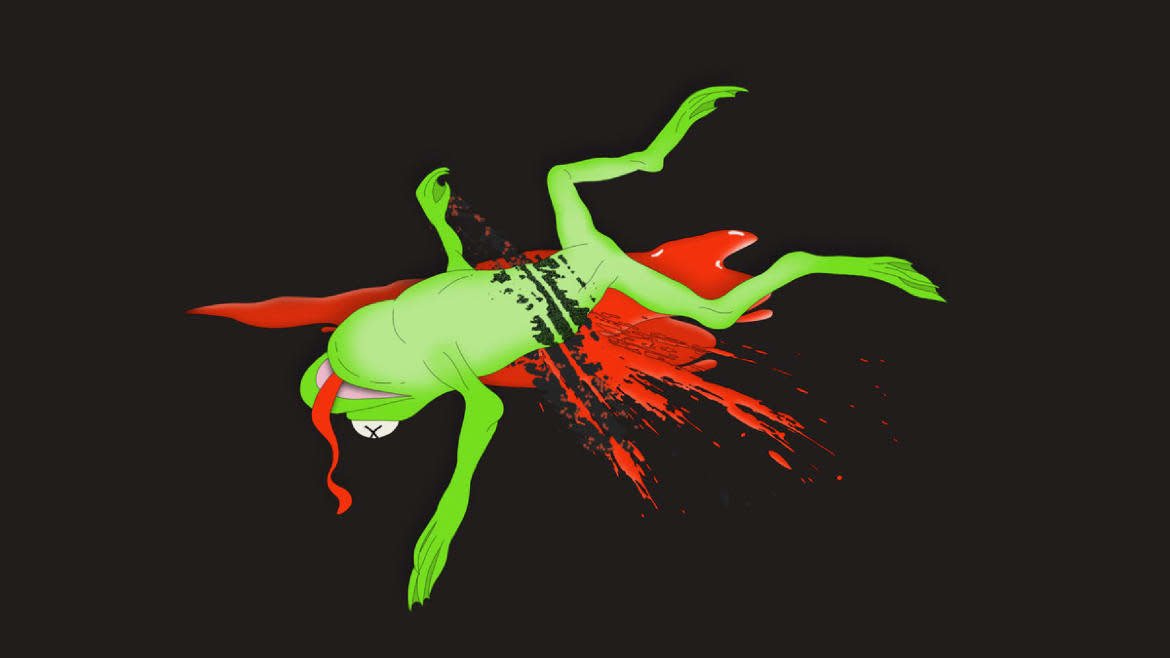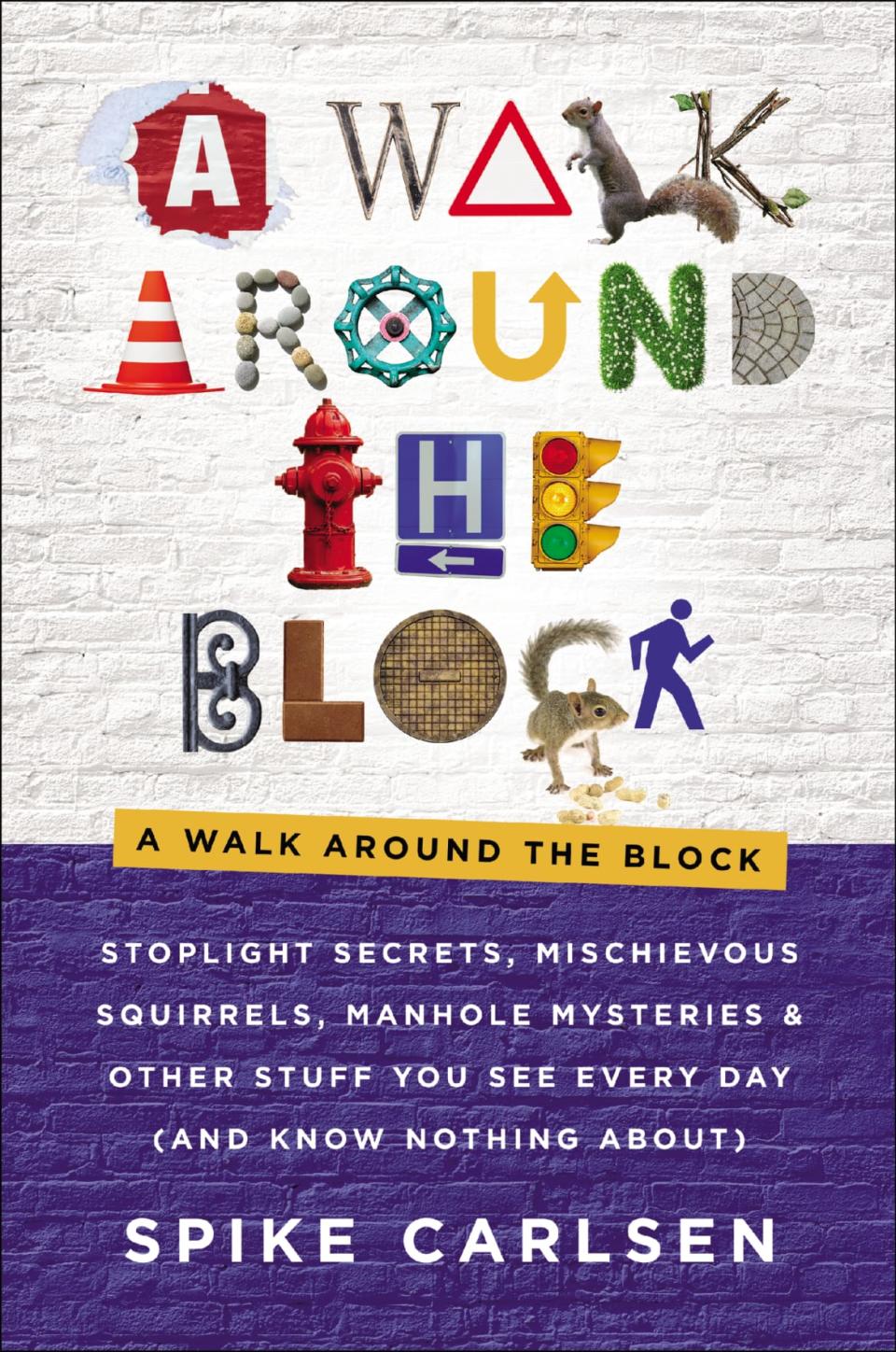Roadkill and Its Dangerous Temptations

When most of us see a dead possum or skunk on the side of the road, we avert our eyes, swerve to the left, pinch our nose, or all three. Not Heather Montgomery. She hits the brakes, pulls over to the shoulder, dons her latex gloves, and then… well, she does something you and I would never do.
The argument can be made that if a critter is so clueless as to think it’s fast enough or tough enough to stand its ground against a Dodge Ram, it deserves to become URP—unidentified road pizza. Unfortunately, for the critter, we’re often the clueless ones. The roads we build crisscross the paths critters use to migrate, mate, and seek out food, water, and shelter. The road salt we spread and apple cores we toss out the car window lure them like moths to a flame. Our distracted driving turns our vehicles into two-ton bullets.
Our collisions with deer, moose, caribou, and other large animals reduce their numbers by about one-and-a-quarter million a year—and reduce our numbers by about 200 a year too. Nationwide, chances are 1 in 170 that you’ll file an animal collision insurance claim this year (1 in 46 if you live in West Virginia; 1 in 6,380 if you live in Hawaii). Insurance companies shell out about $4 billion annually for animal collisions—and we shell out an equal amount in lost wages and medical expenses.
Roadkill differs from state to state and country to country. Armadillos and possums pose issues in the Deep South; it’s moose and caribou in Alaska, deer almost everywhere, kangaroos in Australia, penguins in New Zealand, monkeys in Costa Rica, and crabs on Christmas Island.
What can we do besides avert, swerve, and pinch? Plenty. I’m sitting with Montgomery in her home, overlooking the rolling hills of Ardmore, Alabama. Well, I’m sitting—she’s zipping around. Because she’s ecstatic about roadkill. She has the wide-eyed enthusiasm of the elementary school kids she teaches visit after visit, week after week. She’s the author of Something Rotten: A Fresh Look at Roadkill and How Rude! 10 Real Bugs Who Won’t Mind Their Manners. The title of her upcoming book is Who Gives a Poop? Surprising Science from One End to the Other.
She produces a two-gallon zip-lock bag containing the complete skeleton of a fox, followed by pelts and a plastic box holding feathers, skulls, and tails. We examine deer vertebrae through magnifying loops. With no small amount of glee, Montgomery shows me the skinning knife her husband gave her as an anniversary present. She hands me a skunk pelt to fondle. “I had to sleep on the porch the night I skinned that one,” she discloses.
And while she makes roadkill engaging—even fun—she stresses there are lots of simple things we can do to reduce it. Deer, elk, and many other animals are crepuscular, meaning they’re most active around dusk and dawn. They’re also particularly active in the fall during mating season when love is in the air; indeed, your chances of hitting a deer double in November. “The number one thing you can do is to adjust the time of day you drive. If you can’t do that, slow down,” Montgomery explains. “And if you pay attention, you’ll begin noticing roadkill hot spots.” Waterways, trash sites, or wooded outcroppings where animals hide before dashing across the road are notorious death zones. “And don’t dump stuff out the window. Emptying a can of Coke or tossing a banana peel on the median may seem harmless, but that’s food. It’s inviting animals to the road. It might be only a mouse, but that mouse attracts foxes and owls.
“AND,” and this is where we find Montgomery pulling on the latex gloves at the beginning of this chapter, “it’s critical we get dead stuff off the road. Roadkill attracts other animals that then become roadkill.” Montgomery salvages some roadkill to use in her presentations, but she drags most to the ditch. “I don’t do this as much as I used to, because I’d find so much roadkill I’d never get to where I was going. I made a rule for myself: I could only stop on my way home.” She drags off a lot of armadillos. “They’re slow, have lousy eyesight, like to travel along the mown shoulders of the road, and have this crazy adaptation that makes them jump straight up when a predator approaches. That might scare off a dog or a coyote, but it puts them right on the bumper of a car.”
Why are some animals more prone to becoming roadkill than others? “With rabbits, possums, squirrels, or other preyed-upon animals, their self-preservation instinct is to freeze when in danger; freeze and the predator, which normally detects them through motion, might not see them. They see cars as predators.” Deer are particularly vulnerable because of their eye anatomy; their eyes adjust well to low light conditions, but a high beam hitting those eyes at night literally blinds them. And they act like a deer in the headlights.
We have our corridors—freeways, highways, and railways—and animals have theirs; unfortunately, the two often intersect. That’s part of the rationale behind an $87 million wildlife crossing being built over Highway 101 north of Los Angeles. Its purpose is to provide cougars, deer, coyotes, lizards, snakes, and other animals safe passage to adjacent open spaces where they can find more food, elbowroom, and prospective mates. This will minimize roadkill while maximizing the breeding pool for mountain lions, like the one nicknamed P-22 who’s been marooned by crossroads in LA’s massive Griffith Park. Beth Pratt of the National Wildlife Federation explains that cougars “can’t get out of here to get dates, and cats can’t get in to get dates.” For people who live in LA, she quips, “Having a romance prospect quashed by traffic is something we can all relate to.” But $87 million? It depends on the value you assign to the lives of drivers, animals, and perhaps even the survival of a species.
There are thousands of wildlife bridges and tunnels around the world. On Christmas Island in the Indian Ocean, metal bridges allow 50 million crabs to move unsquished from their homes in the rain forest to their spawning grounds in the ocean. Crossings in Mexico save jaguars. Underpasses in Africa save elephants.
Some measures to reduce roadkill are counterintuitive—like the reintroduction of cougars and wild cats to reduce the number of deer. When they did this in South Dakota, deer hits declined, and insurance claims actually dropped.
Our roads will never be free of roadkill. Some cities and groups are making the best of it. In southern Alabama, roadkill deer are fed to the reptiles of Alligator Alley, a sanctuary for nuisance gators. In New York—a state that needs to dispose of 25,000 deer carcasses a year but can no longer landfill them because of chronic wasting disease (a transmittable, always fatal disease loosely related to mad cow disease)—the Department of Transportation has been creating compost. The recipe? Dump one truckload of woodchips gleaned from roadside tree trimmings on the ground, add four deer carcasses, cover with more woodchips; repeat. Wait as nature bakes at 160F. Remove teeth and large femur bones. Yields nutrient-rich soil that can be used for state landscaping projects.
In Washington state, where you can recover roadkill with a permit, 1,600 deer and elk were picked up and processed in a recent year. Similar laws exist in my home state of Minnesota and 19 others. “If you hit a deer and you’ve got a car with $5,000 damage, the least you could do is get a little meat in your refrigerator,” explains Jay Kehne, of the Washington Department of Fish and Wildlife.
In Alaska, where 600 to 800 moose are killed by cars each year—each with 200 pounds of organic, free-range meat—the law requires you to report a hit. State troopers contact charitable organizations that have volunteers who take the moose to a butcher or dress it themselves. The meat is donated to people in need.
And then there are birds of prey; a roadkill deer presents a veritable all-you-can-eat buffet for them. Fully engorged eagles have trouble getting airborne until their food digests, so they can become roadkill themselves. The National Eagle Repository is a clearinghouse for carcasses and feathers, regularly receiving dead eagles—on ice—from zoos, state departments of natural resources, and individuals. Native Americans wanting feathers or “eagle parts” for ceremonial or religious purposes can make requests of the repository, though obtaining the “whole tail” of an immature golden eagle can involve a wait of up to five years.
And then there’s 77-year-old taxidermist Arthur Boyt of England who’s been eating fresh roadkill since he was 13. He touts the benefits: it’s organic, it’s hormone- and antibiotic-free, it gets bodies off the road, and the price is right. “I’ve been ill from eating food from a buffet,” Boyt says. “But I’ve never ever been ill from eating roadkill.”
Nor have I.
I had the chance to follow in Boyt’s footsteps as a judge in 2019 at the annual West Virginia Roadkill Cook-Off in Marlinton. According to the rules, “All entries must have, as their featured ingredient, any animal commonly found dead on the side of the road—groundhog, opossum, deer, rabbit, bear, crow, squirrel, snake, turkey, etc.” In past years, iguana, crawdads, and alligator were served.
I had imagined downing some nose-holding fare akin to the warthog anus or beating python heart Anthony Bourdain had eaten for his travel and food show Anthony Bourdain: Parts Unknown. But I was wrong. All of the eight dishes I tried were flavorful and well-presented (most had been recently hunted). I downed “Bad News Bears Bumper Tacos,” rabbit gumbo, “Side Ditch Doe,” and more. The unanimous winner was wild boar served in stuffed poblano peppers drizzled with cheese, which made me realize how much I had missed by limiting myself to the Big Four: beef, chicken, fish, and pork.
Montgomery writes about roadkill being used by medical researchers to study cancer and by scientists to learn more about fossils. She talks about kids in Arizona who invented a solar-powered motion sensor to warn drivers of wildlife near the road and of a Massachusetts woman who founded Peace Fur using “accidental fur” to create fox, bear, and raccoon neck muffs. Montgomery waxes about how excited kids get when they handle the ball and socket joint of a fox and realize it’s the same ball and socket as their own. And, in the end, you realize, the study of roadkill isn’t about death; it’s about life.
Excerpt from A Walk Around the Block: Stoplight Secrets, Mischievous Squirrels, Manhole Mysteries & Other Stuff You See Every Day (And Know Nothing About) by Spike Carlsen. Published by HarperOne. Copyright © 2020 HarperCollins.

Get our top stories in your inbox every day. Sign up now!
Daily Beast Membership: Beast Inside goes deeper on the stories that matter to you. Learn more.

